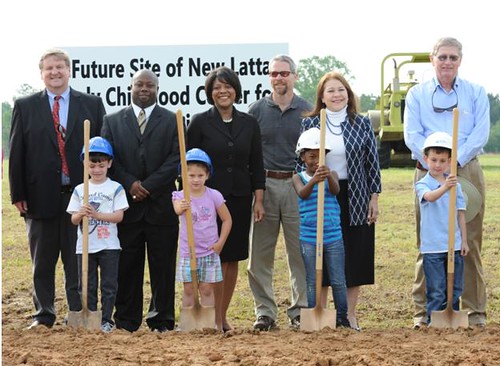
Cross-posted from the White House Rural Council blog:
"Will we accept an economy where only a few of us do spectacularly well? Or will we build an economy where everyone who works hard has a chance to get ahead? ... This country does best when everyone gets their fair shot, everyone does their fair share, and everyone plays by the same set of rules."
-- President Obama, January 31, 2015
The American Dream is a dream of opportunity for a better future. Who better represents this opportunity than our country’s children? As parents and as leaders, we owe it to our kids to provide them access to education, housing and health care, and most importantly, an opportunity to succeed so they can help our nation compete in a 21st century economy.
In small towns and rural communities, kids living in poverty often miss out on these opportunities. They are often isolated and have limited access to support services. School may be miles away, the health care clinic miles in the other direction and the nearest grocery store in yet another direction. Public transportation options are limited, and the family car may be in the shop. Rent might be hard to meet and college might seem to be only a dream.
Our kids are the most important assets we have for building the future economy, and it is essential to make sure rural kids growing up in poverty can reach their full potential. Investing in rural children and their families is critical not just to the long-term success of our rural communities, but to our global competitiveness. Studies indicate that we spend an estimated $500 billion each year on expenses related to child poverty. Imagine if we could use even a fraction of that in smarter ways to serve our children.
Since President Obama convened the White House Rural Council four years ago, we have made tremendous progress in creating new opportunities for rural businesses and communities to thrive and grow. As these opportunities expand, we now need to ensure that they are available to everyone. To that end, the White House Rural Council convened last week to explore how the Administration can better coordinate and target efforts so that rural families living in poverty have the best chance to climb into the middle class.
The work of the White House Rural Council will build on a number of ideas proposed in the President’s recent budget, including:
Earned Income Tax Credit (EITC) and the Child Tax Credit (CTC) are essential tools for low-income workers struggling to make ends meet and helping families balance their budgets to plan for their future. Despite nearly equal employment rates in urban and rural areas rural families are more likely to be working poor. The Budget proposes making permanent improvements to the EITC and CTC that are scheduled to expire at the end of 2017. Without these benefits, a full-time minimum wage worker with two children could see a $1,700 tax hike.
Voluntary home visiting programs enable nurses, social workers, and parent educators to help parents acquire the skills to promote their children’s development, health, and ability to learn. Studies of home visiting programs have shown higher grade point averages and achievement scores at age 9, higher graduation rates from high school, and greater parent participation in education and job training programs.
Free community colleges and expanded technical training will enable rural students to develop critical skills to give them more job opportunities. If enacted, the program could save eligible community college students $3,300 per year and develop well-trained workers for the future.
Rural Child Poverty Demonstration program will support local governments and nonprofits that are engaged in innovative strategies to combat rural child poverty. Low-resource rural communities need the capacity, including the human resources and the information technology capability, to make the greatest positive impacts on kids and families.
Today, USDA announced 5 unique projects in Kentucky, Nevada, Virginia, the Chickasaw Nation (Oklahoma) and the Navajo Nation (Arizona) to develop and test innovative strategies to end childhood hunger, including new service models to meet and serve kids and families where they are.
This is just the beginning.
Kids have the potential to rebuild our rural economies and lead us into tomorrow. We need to make sure every child has a chance to succeed and contribute to their communities. The White House Rural Council is ready to lead this effort on behalf of our nation’s future.
Doug O’Brien is Senior Policy Advisor for Rural Affairs with the White House Domestic Policy Council.
